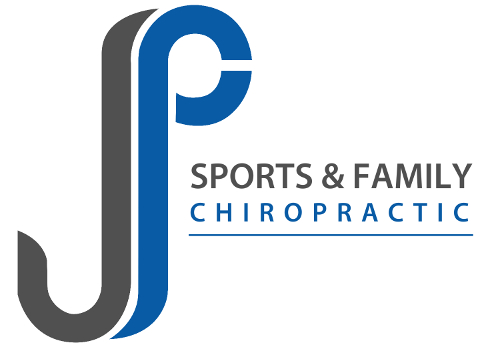![]() 631-598-7034
631-598-7034![]() Schedule Online
Schedule Online
Newsletter Sign Up
Want to keep up to date with all our latest news and information? Enter your email below to be added to our mailing list.
Bone Health
Bone Health & Osteoporosis
It is a major health problem affecting more than 25 million individuals in the United States and is responsible for well over one million bone fractures each year. By extreme old age, one of every three women and one of every six men will have had a hip fracture, which, by any measure, is the most devastating of all osteoporotic fractures. In fact, the Food and Drug Administration concludes “maintenance of an adequate calcium intake throughout life may optimize peak bone mass at skeletal maturity and help to slow the rate of bone loss later in life, and may help to reduce the risk of osteoporosis.”
Risk factors for Osteoporosis
Two major factors that influence the risk of development of osteoporosis are the level of bone mass achieved at skeletal maturity (peak bone mass) and the rate at which bone loss occurs in later years. Experts agree that prevention is likely to remain the most effective method of dealing with osteoporosis. The two approaches to prevention are maximizing peak bone mass at skeletal maturity and reducing the rate of age and menopause related bone loss. Studies have shown that maximizing calcium intake during the growth years and up to age 25-30 can greatly affect an individual’s peak bone mass. Bone remodeling is in balance until the fourth decade of life when resorption becomes slightly greater than formation and a small, continuous loss of bone mass results. A study reported in the New England Journal of Medicine demonstrated a 43% reduction in bone loss in post- menopausal women who supplemented their regular diets with 1000 mg of calcium for two years compared to postmenopausal women receiving placebos.
Calcium--what are the recommended levels?
The authors of a study of recent intervention trials of calcium supplementation recommended that RDA during childhood should be 1250 mg and 1450 mg during adolescence, while others have recommended a calcium intake of up to 1800 mg a day during adolescence. The National Institute of Health Consensus Conference on Optimal Calcium intake recommends calcium intakes of 1200 to 1500 mg for 11-24 year olds, 1000 mg for those 25- 50 years, and 1500 mg for those over 65. In addition, for women over 50 years who are not receiving hormone replacements the NIH recommends a calcium intake of 1500 mg/per day.
Calcium Absorption
Large quantities of dietary fiber can interfere with calcium absorption, as can diuretics, alcohol, certain medications such as corticosteroids, and vitamin D deficiency.
Vitamin D
Vitamin D deficiency is associated with increased risk of hip fracture, and several studies have demonstrated that an increase in calcium intake of 800 to 1000 mg per day with supplementation of 400-800 units of Vitamin D daily will decrease the risk of vertebral and non-vertebral fractures and increase bone mineral density.
Magnesium
Magnesium depletion affects all stages of skeletal metabolism adversely, causing cessation of bone growth, decreased osteoblastic and osteoclastic activity, osteopenia, and bone fragility.
Trace Minerals
Studies have shown that trace mineral deficiencies can impair bone formation and resorption. In a two year clinical study, post menopausal women who received calcium supplements together with Zinc, Copper, and manganese experienced a gain in bone mineral density while women receiving calcium alone, trace minerals alone, or a placebo experience increasingly greater losses in bone mineral density.
Ipriflavone
Ipriflavone is a derivative of naturally occurring isoflavones that is active in bone metabolism. In vivo and in vitro studies in different experimental models have demonstrated the inhibitory effect of Ipriflavone on osteoclast recruitment and function, and a stimulatory affect on osteoblastic activity (bone formation). Numerous double blind, placebo – controlled studies have shown a positive effect of Ipriflavone in reducing bone mineral loss and increasing bone density in post menopausal women with osteopenia or established osteoporosis at a dose of 600 mg a day.
Comprehensive bone nourishment: MCHC
In addition to calcium and the organic components (mostly collagen protein and mucopolysaccharides), MCHC contains phosphorus, magnesium, fluoride, zinc, silicon, manganese, and other trace minerals in the same physiological proportions found in healthy bone. Another study of osteoporotic postmenopausal women, with the complication of primary biliary cirrhosis, showed that MCHC supplementation not only helped reduce bone loss but it actually helped increase cortical bone thickness by 6.1%. These results indicate that MCHC has a beneficial effect on the process of bone healing but that this effect is lost if the organic components of the compound are destroyed or if pure calcium carbonate treatment is substituted. The researchers postulated “specific osteogenic substances may be present in the organic fraction of MCHC, resulting in its observed superiority over simple mineral supplementation.”
Guidelines for determining the purity of MCHC
All MCHC products are not the same. The source of the bone extract as well as the processing procedures is of utmost importance in determining the quality of MCHC. How can you be sure that what you are providing to your patients is pure, authentic MCHC? Guidelines for determining the identity and purity of MCHC products may prove helpful to the clinician wanting to provide an exceptional product to his or her patients.
Contact
217 Merrick Rd.
Suite 204
Amityville, NY 11701
Phone: (631) 598-7034
Fax: (631) 598-7479
Email: drjpop@gmail.com
Home About Media Wellness Schedule Appointment Contact Patient Center 2016 U.S Open 15th Annual Tunnel To Towers
Copyright©2016 All Rights Reserved.





